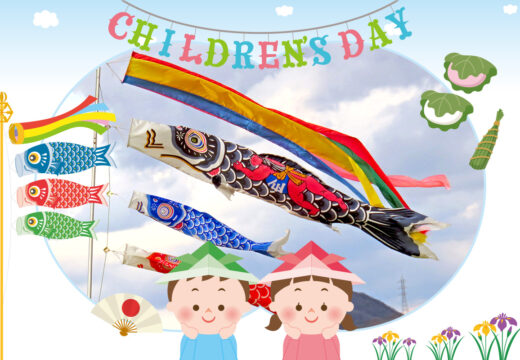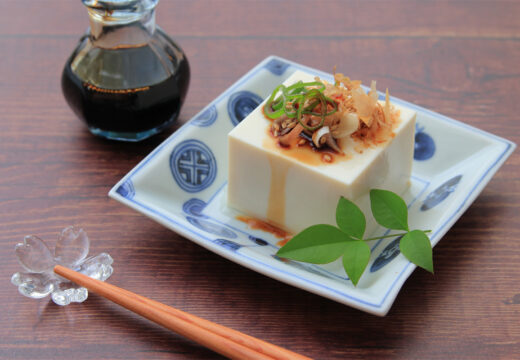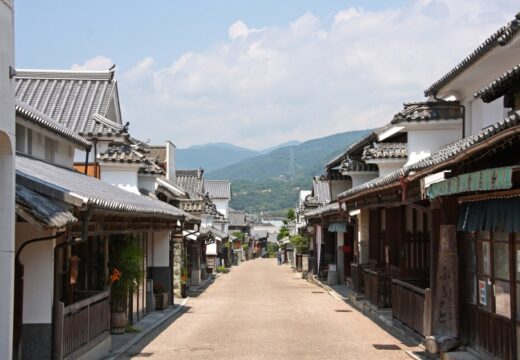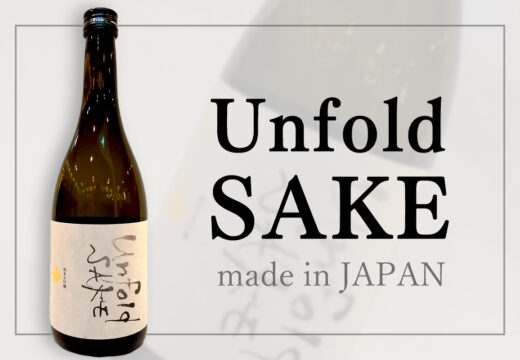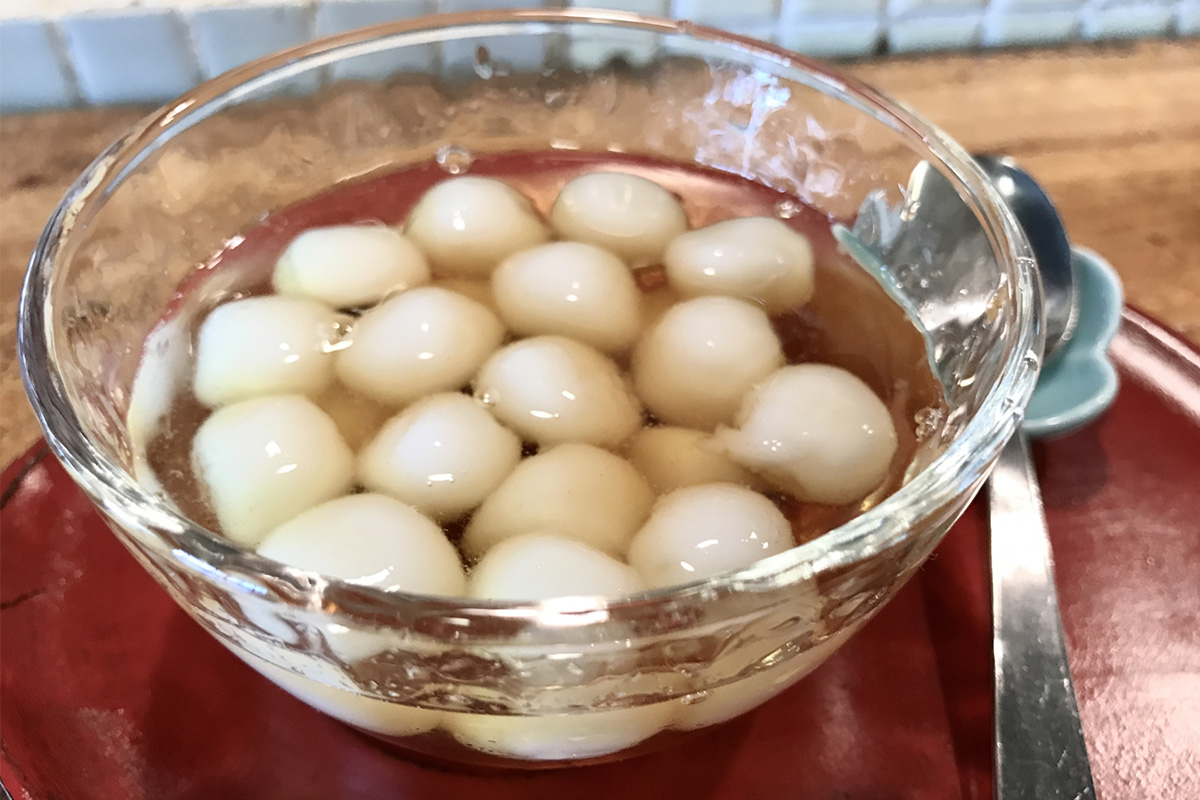
Each region of Japan has its own famous confections that represent the prefecture. Today, I will introduce 6 famous confections from the Kyushu region!
Please take a look at them for souvenirs and food.
1.Karukan(KAGOSHIMA)

Karukan is a specialty Japanese confectionery of Kagoshima Prefecture and other parts of Kyushu and Okinawa.
Karu means light. Kan can mean many things, but it can also refer to yokan, a Japanese confectionery, or to a hardened food.
The white dough is made from sugar, rice flour, and yams.Some have anko (red bean paste) inside, while others do not.
The dough is spongy but a bit chunky.
It is a Japanese confectionery with quite a long history and was invented by confectioners for preserving food. Today, it is so popular that tourists from outside the prefecture buy it as a souvenir!
2.Yaseuma(OITA)
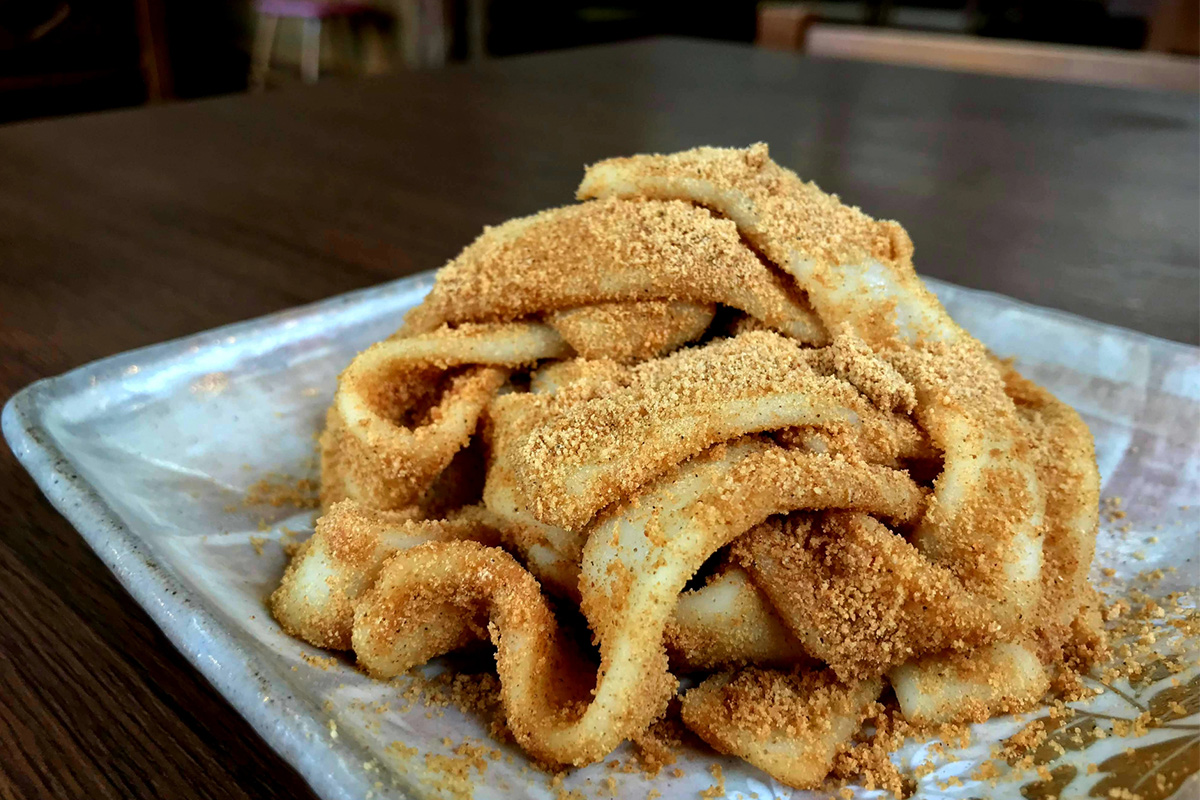
Yaseuma is a local dish of Oita Prefecture, made by boiling flat wheat-flour noodles and sprinkling soybean flour and sugar over them.
It is generally eaten as a snack. They are also served in school lunches.
There are several theories as to the origin of this traditional pastry.The first theory is that the confectionery called Yaseuma was created by an old nobleman who said “Umai (meaning “good”)” to this confectionery made by his nanny, “Yase-san”.
Another interesting origin is the theory that wheat was originally horse feed, but humans used wheat to make this snack and ate it, causing the horses to lose weight (in Japanese, the word for horse is “Uma” and to lose weight is “Yaseru”).
I find it interesting that sweets have been eaten for so long.
3.Umegae-mochi(FUKUOKA)
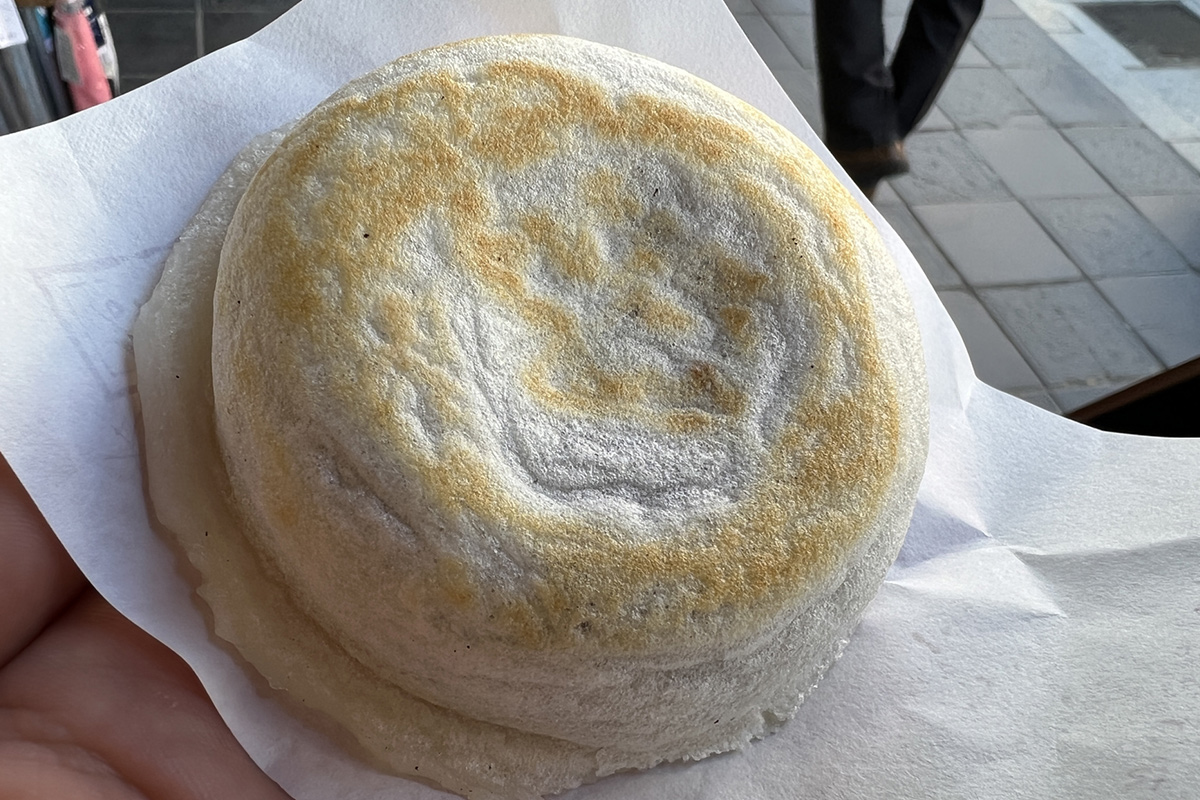
Rice cake sweets that can be bought in Dazaifu, Fukuoka Prefecture. Anko (red bean paste) is wrapped in thin rice cakes and baked on an iron plate with a plum imprint.
You can buy these sweets in Dazaifu, near Dazaifu Tenmangu Shrine.
Dazaifu Tenmangu Shrine is dedicated to Sugawara no Michizane. This Sugawara no Michizane was fond of rice cakes.An old woman who lived nearby put Sugawara no Michizane’s favorite rice cake on a plum branch, which is said to be the origin of this confection.
According to statistics gathered by a Japanese confectioner named Kasanoya, 95% of people who visit Dazaifu Tenmangu Shrine end up buying this Umegae-mochi.
4.Ikinari dango(KUMAMOTO)
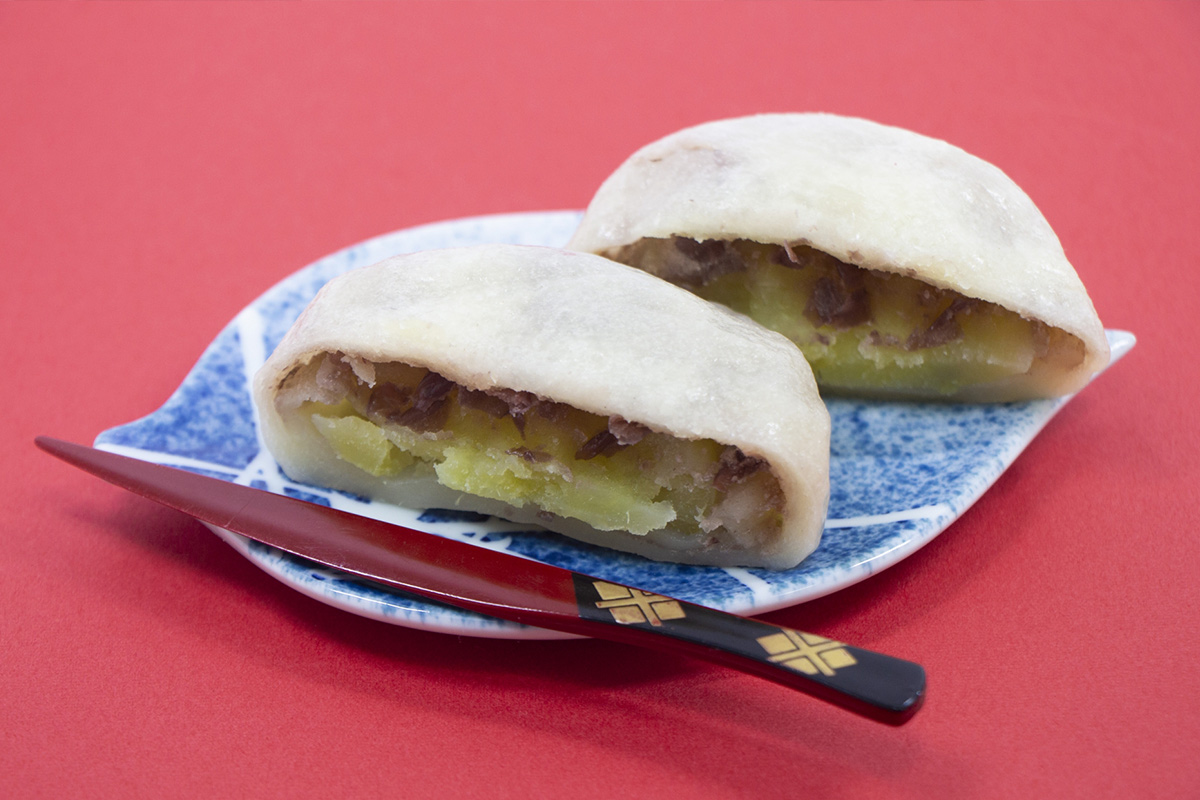
Ikinari-dango, a local Kumamoto confectionery, is a Japanese confectionery made by steaming sliced sweet potatoes wrapped in rice cake dough.
It was once eaten in Kumamoto Prefecture as a snack during the sweet potato harvest season. It is a traditional sweet that spread among ordinary households.
Ikinari, by the way, means “easy and quick” in the Kumamoto dialect. The name “Ikinari” means “quick and easy” in the dialect of Kumamoto Prefecture.
5.Kankoro-mochi(NAGASAKI)
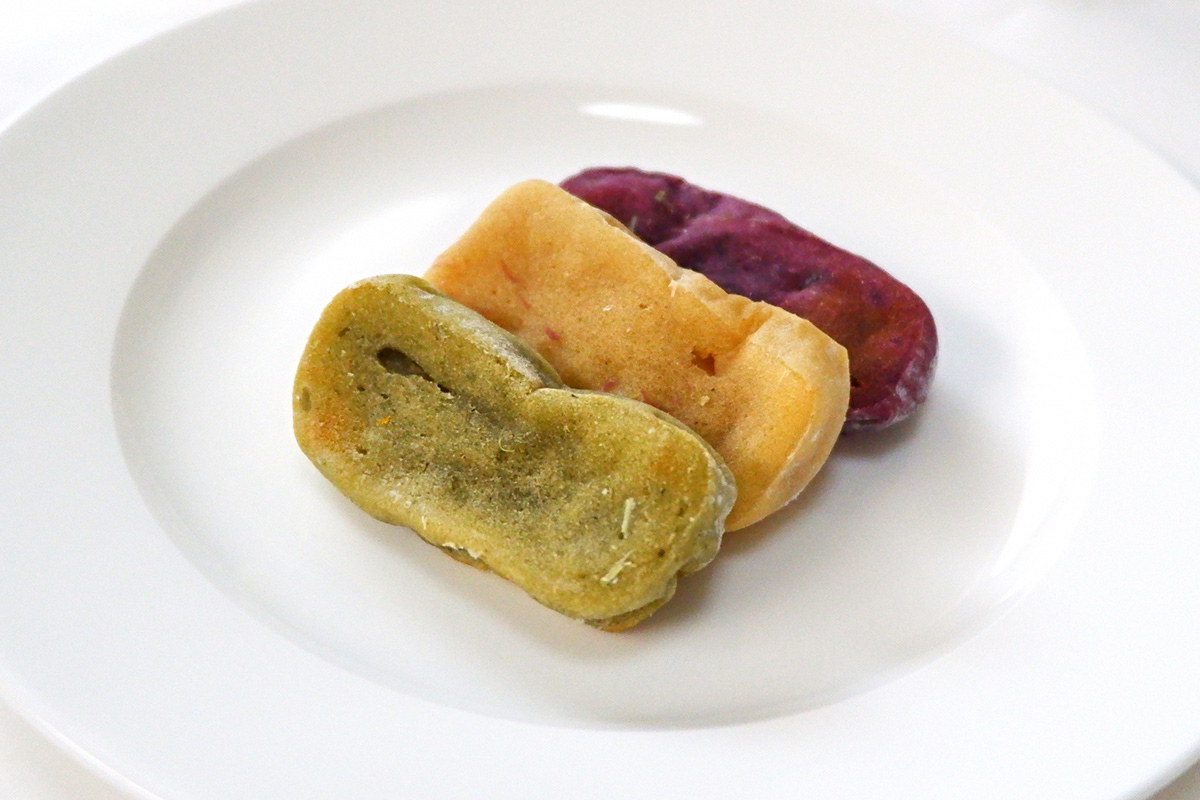
Kankoromochi is a local confectionery of the Goto region of Nagasaki. It is made by cutting sweet potatoes into thin slices, drying them in the sun, and mixing them with rice cake.
The reason why sweet potatoes were mixed with rice cakes is that glutinous rice used to be very expensive, so adding dried sweet potatoes increased the quantity and everyone ate a lot. This is truly the wisdom of our ancestors!
It is said that it is still made in every household as a winter preservation food in the Gotō region.
6.Kanzarashi(NAGASAKI)

Kanzarashi is a traditional confectionery passed down in the Shimabara region of Nagasaki Prefecture.
Dumplings made from white bean flour are cooled in cold spring water and dipped in honey or sugar.
What a surprise, it is a local confectionery that has been around for more than 100 years.
Incidentally, Kanzarashi is written “寒ざらし” in Japanese.S means cold and zarashi means to immerse things in water.It gets its name from the fact that it is made by soaking glutinous rice in water on a very cold day.
Souvenirs to buy when Aki goes to Kyushu area
Finally, here are some of my favorite sweets from the Kyushu region.
That’s it…Nagasaki Castella!
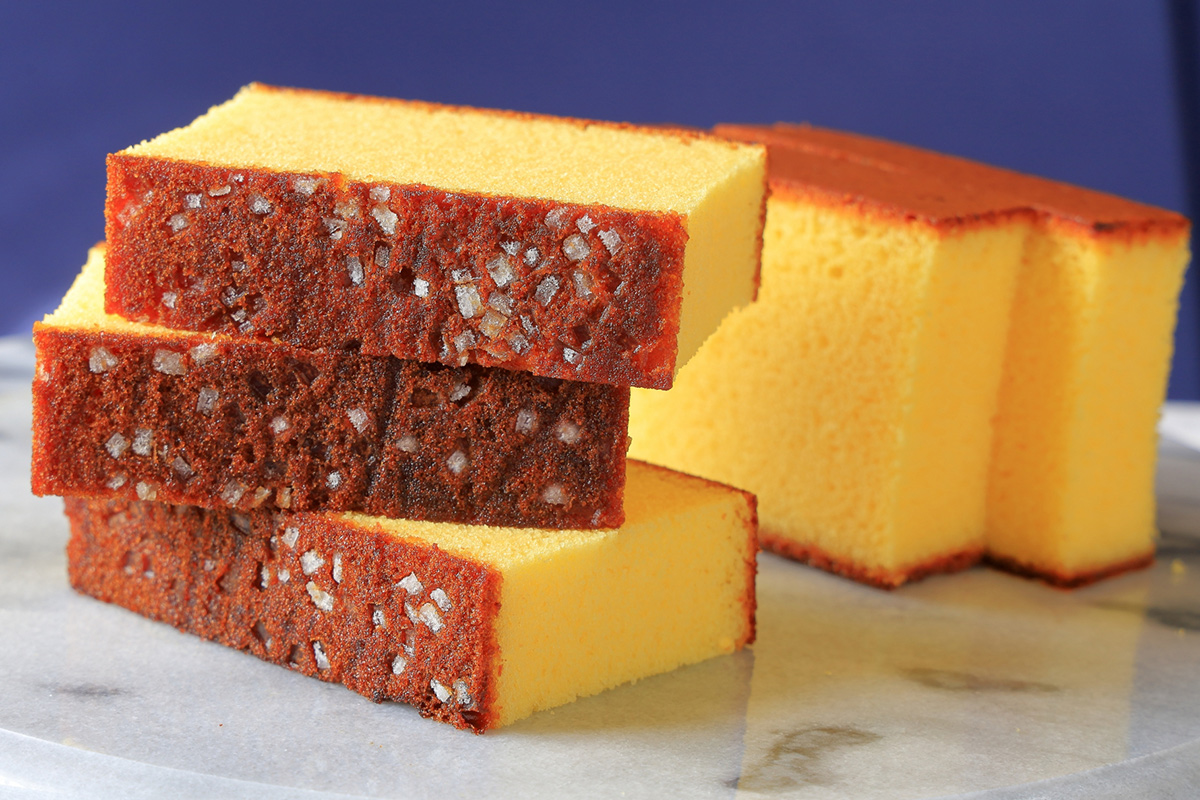
I especially love Castella with sugar spread on the bottom.The fluffy sweet Castella and the crunchy sugar are a perfect match.
In the past, when there was no oxygen absorber, this sugar was placed on the bottom to provide preservatives and keep the product moist.
Some of the Castella shops have been in business for over 400 years. If you visit Nagasaki, be sure to check the Castella.
Did you find any local snacks that you would like to try?
Actually, I have only tried Ikinari-dango among them. I am curious about Umegae-mochi! I will definitely try it when I visit Dazaifu Tenmangu Shrine.





